Charging Time for a 72V Battery Explained
If you're using an electric bike, scooter, motorcycle, or any other electric vehicle powered by a 72V system, understanding the battery charging time is essential for maximizing performance and efficiency. Whether you're planning long rides, upgrading your power system, or just curious about best practices, knowing how long it takes to charge a 72V battery can make a big difference in your overall experience.
- Factors That Affect 72V Battery Charging Time
- Understanding 72V Battery Charging Stages
- Average Charging Time for Common 72V Battery Configurations
- Best Practices for Charging a 72V Battery
- Battery Chemistry and Charging Behavior
- Can You Fast Charge a 72V Battery?
- Calculating Charging Time Manually
- Smart Charging Systems and BMS Integration
- How Weather and Climate Affect Charging Time
- How to Extend the Life of Your 72V Battery
- Charging Time Differences by Application
- Tips for Safe and Efficient Battery Charging
- How Long Does It Take to Charge a 72V Battery?
Factors That Affect 72V Battery Charging Time
When it comes to calculating the charging time of a battery, several critical factors play a role. Understanding these helps in making informed decisions about chargers, charging habits, and battery maintenance.
Battery Capacity in Amp Hours (Ah)
One of the main elements affecting how long it takes to charge your 72V battery is its capacity, usually measured in amp-hours (Ah). A higher Ah rating means more energy storage and, therefore, a longer charging time.
Example:
A 72V 20Ah battery will charge faster than a 72V 50Ah battery using the same charger.
Charger Output Current (Amperage)
The charging current provided by the charger significantly affects charging speed. A 10A charger will charge a 72V battery twice as fast as a 5A charger, all other things being equal.
Rule of Thumb:
Charging Time (in hours) ≈ Battery Capacity (Ah) ÷ Charger Current (A)
State of Charge Before Charging
How depleted your battery is before charging will also influence the overall time. Charging from 20% to 100% takes longer than charging from 80% to 100%, especially with smart chargers that slow down near the full mark to protect battery health.
>>See also Which Battery Technology Is Best Between 18650 21700 and 32650
Understanding 72V Battery Charging Stages
Bulk Charging Phase
This is the first and fastest stage. Most of the current flows into the battery, quickly ramping up the state of charge to about 80%.
Absorption Phase
In this phase, the charger reduces current while maintaining constant voltage. It takes more time to complete the remaining 20%, ensuring the battery is fully saturated without overheating.
Float or Maintenance Phase (if applicable)
For some lithium-ion and lead-acid batteries, the float charge keeps the battery topped off without overcharging. It's not common in all 72V battery chemistries but useful in certain applications.
Average Charging Time for Common 72V Battery Configurations
Depending on charger capacity and battery size, here are some average charge times:
|
Battery Capacity |
Charger Current |
Approximate Charging Time |
|
72V 20Ah |
5A |
4-5 hours |
|
72V 30Ah |
10A |
3-4 hours |
|
72V 40Ah |
5A |
7-9 hours |
|
72V 50Ah |
10A |
5-6 hours |
These estimates assume the battery is significantly discharged before charging begins.
Best Practices for Charging a 72V Battery
To ensure safety, longevity, and performance, follow these charging tips.
Use the Correct Charger
Always use a charger specifically designed for your 72V battery type. Mismatched chargers can cause overcharging or undercharging, both of which reduce lifespan and performance.
Avoid Overcharging
While modern lithium-ion batteries come with Battery Management Systems (BMS), it’s still crucial to avoid prolonged overcharging. Some chargers don’t shut off automatically, especially with lead-acid batteries.
Maintain Optimal Temperature
Charge the battery in a cool, dry environment. High temperatures can increase the risk of thermal runaway, especially with lithium-ion chemistries.
Don’t Let the Battery Sit at 0%
Allowing your 72V battery to fully discharge regularly can degrade its performance. Recharge once it drops to about 20-30% to maximize lifespan.
Battery Chemistry and Charging Behavior
Different battery chemistries behave differently during charging.
Lithium-ion
High energy density
Fast charging capability
Usually comes with a BMS
Doesn’t require float charging
Lead-acid
Lower energy density
Slower charging
Requires more careful maintenance
Heavier and bulkier
LiFePO4 (Lithium Iron Phosphate)
Very stable and long-lasting
Slightly lower voltage per cell
Safer, but typically slower to charge
Knowing your 72V battery’s chemistry helps you optimize the charging method and equipment.
Can You Fast Charge a 72V Battery?
Yes, but with caveats. Fast charging pushes a higher current into the battery to reduce charging time. However, it increases heat and stress, which can shorten the battery’s overall life.
When to Consider Fast Charging
In emergencies or during travel
If your BMS supports higher charging currents
If your charger and wiring can handle the extra heat
Warning: Do not fast charge unless your 72V battery is rated for it.
Calculating Charging Time Manually
To get a rough estimate of how long it will take to charge your battery:
Formula:
Charging Time = Battery Capacity (Ah) ÷ Charger Output (A)
Example:
A 72V 30Ah battery charged with a 6A charger:
30 ÷ 6 = 5 hours (approximate)
Note: Real-world times may be 10-20% longer due to inefficiencies.
Smart Charging Systems and BMS Integration
What is a BMS?
A Battery Management System regulates how your 72V battery is charged and discharged. It prevents overcharging, overheating, and cell imbalance.
Why It Matters
A good BMS extends battery life and ensures safe charging. It can communicate with smart chargers to modulate current and voltage in real-time.
Smart Chargers
Smart chargers detect the battery’s state of charge and automatically adjust current and voltage. These are ideal for maintaining long-term battery health.
How Weather and Climate Affect Charging Time
Cold Weather
Charging in cold conditions slows down chemical reactions inside the battery, increasing charging time. Lithium batteries may even refuse to charge below 0°C (32°F).
Hot Weather
High heat increases risk but doesn’t necessarily speed up charging. Overheating during charging can permanently damage your battery.
Tip: Try to charge your 72V battery in temperatures between 10°C to 30°C (50°F to 86°F).
>>See also How Long Do Trojan Golf Cart Batteries Last
How to Extend the Life of Your 72V Battery
Charge Regularly
Don’t let your battery sit unused for long periods. Recharge at least every 2–3 months, even if not in use.
Partial Charges Are Okay
Frequent top-ups (like from 30% to 80%) are better than full charges every time, especially for lithium-based batteries.
Store at Mid-Charge
If storing for a long time, keep your 72V battery at around 50–60% charge.
Charging Time Differences by Application
E-Bikes and Scooters
Typically use 72V batteries between 20–30Ah. Charging time ranges from 3 to 6 hours depending on the charger.
Electric Motorcycles
Larger batteries, often 40Ah or more. Charging can take 6 to 8 hours, sometimes longer.
DIY Solar Storage or Powerwalls
These setups often use 72V batteries as part of larger off-grid systems. Charging time depends on solar panel output and charger rating, often extending across several hours to a full day.
Tips for Safe and Efficient Battery Charging
Always monitor the first few charges of a new battery.
Don’t use damaged or third-party chargers.
Unplug the charger once fully charged, unless it has an automatic shutoff.
Keep chargers clean and dry.
How Long Does It Take to Charge a 72V Battery?
The time it takes to fully charge a 72V battery depends on multiple factors—its capacity, your charger’s output, the current charge level, battery chemistry, and temperature conditions. On average, most 72V batteries take between 3 to 8 hours to charge with a compatible charger.
Investing in a proper smart charger, using the correct settings, and following best practices will ensure your battery performs at its best while maintaining a longer lifespan.
Understanding your charging system not only saves time but also helps you get the most out of your 72V battery in the long run.



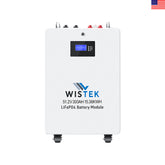
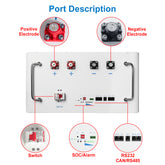
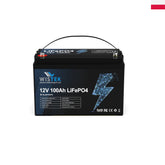

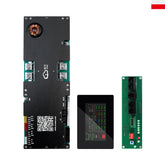

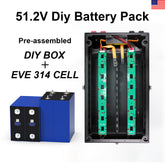

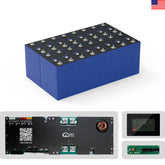



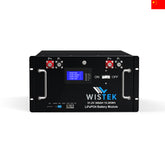
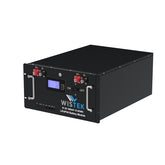


Leave a comment
All blog comments are checked prior to publishing